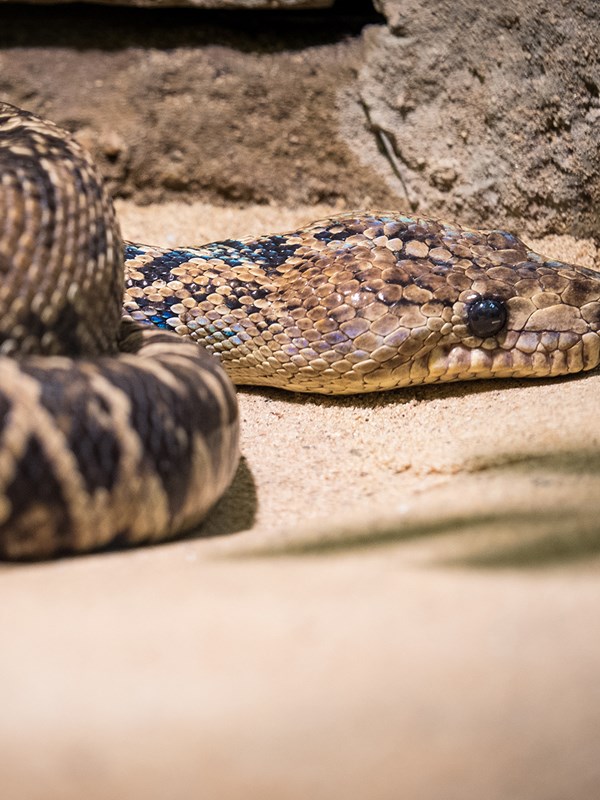
Cuban Boa (Cuban Tree Boa)
Scientific Name Epicrates angulifer
Native To Cuba
Habitat Tropical dry forests and scrub forests
Diet Birds, rodents, bats, lizards
Size and Age 2-4.8 m (6.5-15.7 ft); lifespan up to 22 years
Natural History
In western Cuba, this boa tends to have bold, dark brown or black markings on the top and sides of its body, whereas further east, it tends to be paler with less distinguished markings. The Cuban boa is a skillful predator of rodents, which are ambushed on the ground. Remarkably, it is also able to snatch bats from the air, as they enter or exit roosting caves.
Near Threatened

Conservation Status
Local villagers believe the boa targets livestock, so they are often killed. This unique snake is vulnerable to changing weather conditions such as forest fires and cyclones.
International trade in the Cuban boa is restricted by its listing on Appendix II of the Convention on International Trade in Endangered Species (CITES). The Cuban boa is also included on the European Endangered Species Programme (EEP), a breeding programme coordinated by Prague Zoo. Bristol Zoo Gardens have also successfully bred the Cuban boa for 20 years.
Interesting Facts
- This boa is nocturnal.
- It gives birth to live young, instead of laying eggs.
- Its young are independent from birth.
- This snake has heat sensing pits in crevices surrounding its mouth which can be used to sense prey in the dark. The boa will first strike at prey and then coil around it (to suffocate it before consumption).
